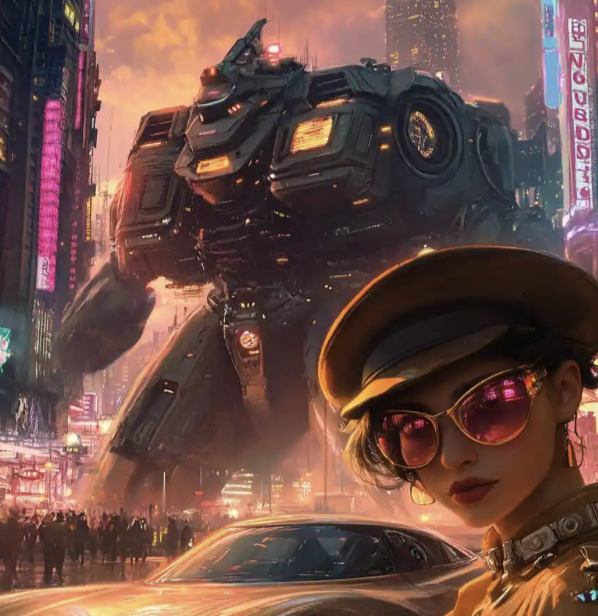Science fiction didn’t emerge in a vacuum—it evolved alongside the broader cultural and artistic movements that shaped the 20th century. Among these, modernism stands as perhaps the most influential force in transforming science fiction from pulp adventure stories into sophisticated literature capable of exploring the deepest questions about humanity, technology, and existence itself. Understanding modernist science fiction means understanding how writers began to use the genre’s speculative elements to examine the fractured, accelerating, and increasingly alienated world of the modern era.
The Modernist Revolution
Modernism emerged in the early 20th century as artists, writers, and thinkers grappled with rapid industrialization, urbanization, and the devastating impact of World War I. Traditional narrative forms, linear storytelling, and comfortable assumptions about progress and human nature suddenly seemed inadequate to capture the complexity and horror of modern life. Modernist writers like James Joyce, Virginia Woolf, and T.S. Eliot experimented with stream-of-consciousness, fragmented narratives, and unreliable perspectives to better represent psychological reality.
When these techniques merged with science fiction’s speculative framework, the results were revolutionary. Science fiction had always been about change and the future, but modernist approaches allowed writers to explore how rapid technological and social change affected human consciousness itself—not just what we might invent, but how invention might change who we are.
Breaking Linear Time
One of modernism’s most significant contributions to science fiction was the destruction of linear narrative time. Traditional science fiction often followed straightforward chronological progression—invention, development, consequence. Modernist science fiction shattered this approach, using time travel, alternate timelines, and non-linear storytelling to reflect the psychological experience of living in an age where the past, present, and future seemed to collapse into each other.
Writers began experimenting with stories that jumped between time periods, presented multiple possible futures simultaneously, or used science fictional elements to explore subjective time and memory. The result was fiction that captured the disorienting experience of modernity, where technological advancement seemed to accelerate beyond human comprehension and traditional markers of progress lost their meaning.
The Fragmented Self
Modernist literature was deeply concerned with the fragmentation of individual identity in the modern world. Science fiction provided the perfect vehicle for exploring these themes through concepts like consciousness transfer, multiple personalities in artificial intelligences, or the psychological effects of encountering truly alien forms of intelligence.
Characters in modernist science fiction often struggle with questions of authentic selfhood in worlds where technology can manipulate memory, consciousness, or even basic identity. These stories move beyond simple adventure plots to examine fundamental questions about what makes us human when the boundaries between mind and machine, individual and collective, become increasingly blurred.
Alienation and Estrangement
The modernist concept of alienation—feeling disconnected from society, nature, and even oneself—found perfect expression in science fiction’s ability to literalize metaphorical experiences. If modern life made people feel like aliens in their own world, science fiction could explore actual aliens, artificial beings, or humans transformed beyond recognition by technology.
This wasn’t the comfortable alienation of the romantic outsider, but the genuine horror of disconnection that characterized modern urban life. Characters might find themselves literally transformed into something inhuman, or discover that their entire reality was artificial, or encounter forms of intelligence so foreign that communication becomes impossible. These scenarios served as powerful metaphors for the psychological experience of modernity.
Technology as Character and Environment
While earlier science fiction often treated technology as tool or plot device, modernist approaches began exploring technology as an environment that shapes consciousness itself. The city becomes a character, artificial intelligences develop neuroses, and technological systems take on lives of their own that dwarf human agency.
This perspective reflected the modernist understanding that we don’t simply use technology—we live within technological systems that fundamentally alter how we think, feel, and relate to each other. Science fiction became a way to explore these changes by imagining their logical extremes or alternative developments.
Key Figures and Works
Writers like Philip K. Dick pioneered the paranoid, reality-questioning approach that would become central to modernist science fiction. His stories consistently explored themes of authentic identity, the nature of reality, and the psychological impact of living in a world where technology could manipulate perception itself. Works like “Do Androids Dream of Electric Sheep?” and “The Man in the High Castle” exemplify the modernist approach of using science fictional elements to explore fundamental questions about consciousness and reality.
J.G. Ballard took modernist techniques even further, creating experimental fiction that used science fictional scenarios to explore the psychological landscapes of contemporary life. His disaster novels and urban surrealism demonstrated how modernist literary techniques could transform traditional science fiction into something approaching avant-garde art.
The New Wave movement of the 1960s and 1970s explicitly embraced modernist techniques, with writers like Ursula K. Le Guin, Brian Aldiss, and Michael Moorcock experimenting with stream-of-consciousness, non-linear narratives, and psychological realism to create science fiction that prioritized literary achievement alongside speculative content.
Stream of Consciousness in Space
One of the most striking developments in modernist science fiction was the application of stream-of-consciousness techniques to speculative scenarios. Instead of external action driving the narrative, stories began focusing on the internal experience of characters encountering the impossible or incomprehensible.
This approach proved particularly effective for exploring first contact scenarios, time travel experiences, or the psychological impact of living in radically altered environments. By presenting these experiences through fragmented, associative thought patterns, writers could capture the genuine disorientation and wonder of encountering the truly alien.
The Death of Progress
Traditional science fiction was often built on assumptions about technological and social progress—that the future would be better, that problems could be solved through innovation and reason. Modernist science fiction began questioning these assumptions, exploring futures that weren’t necessarily better than the present, or examining how progress itself might become a source of alienation and horror.
This skepticism reflected broader modernist doubts about enlightenment values and linear progress. The devastation of two world wars, the rise of totalitarian movements, and the increasingly obvious negative consequences of industrialization made simple faith in progress seem naive at best.
Experimental Form and Content
Modernist science fiction embraced experimental approaches to storytelling itself. Writers began using unconventional narrative structures, unreliable narrators, and metafictional techniques to create stories that were formally innovative as well as conceptually speculative.
Some stories might be told entirely through corporate memos or computer printouts, others through fragmented memory sequences or multiple contradictory perspectives. The form of the story became part of its meaning, with experimental techniques serving to reinforce themes about the breakdown of traditional communication and understanding.
Psychological Realism in Impossible Worlds
Perhaps the greatest achievement of modernist science fiction was its ability to combine speculative scenarios with genuine psychological realism. Characters in these stories don’t simply react to extraordinary circumstances with heroic determination—they experience confusion, doubt, breakdown, and gradual adaptation in ways that feel authentically human.
This psychological depth transformed science fiction from a genre primarily concerned with external adventure into one capable of exploring the most complex aspects of human experience. The impossible becomes a lens for examining the possible, and speculative scenarios become ways of understanding contemporary psychological and social reality.
Legacy and Evolution
Modernist science fiction’s influence extends far beyond literature into film, television, and other media. The reality-questioning paranoia of Philip K. Dick has influenced countless movies and shows, while the experimental techniques pioneered by New Wave writers continue to inspire contemporary authors.
More importantly, modernist science fiction established that the genre could serve as serious literature, capable of addressing the most pressing questions of its time. It demonstrated that science fiction’s speculative elements, rather than being mere escapism, could provide unique insights into the human condition.
The fragmented, uncertain world that modernist science fiction explored has only become more relevant as digital technology creates new forms of alienation and disconnection. The questions raised by these writers—about identity, reality, authenticity, and human agency in technological systems—remain central to contemporary science fiction and continue to resonate with readers navigating an increasingly complex and mediated world.
Modernist science fiction didn’t just change the genre—it revealed science fiction’s potential as a tool for exploring the deepest currents of modern experience. In doing so, it established science fiction as an essential form of contemporary literature, one uniquely suited to capturing the strange, accelerating, and often frightening reality of life in the modern world.


